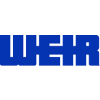Regulatory Compliance : Ensuring that the organization complies with local, state, and federal environmental, health, and safety regulations.
This includes keeping up-to-date with new laws and regulations and making necessary adjustments to company policies.Safety Programs Development : Designing and implementing safety programs and procedures to prevent workplace accidents and illnesses.
This might involve creating safety manuals, emergency response plans, and safety training sessions.Training and Education : Conducting training sessions and workshops for employees on safety practices, emergency response, and the proper use of personal protective equipment (PPE).
Incident Investigation : Investigating workplace accidents, near-misses, and other safety incidents to determine root causes and recommend corrective actions to prevent recurrence.
Risk Assessment : Performing risk assessments to identify potential hazards in the workplace and evaluating the effectiveness of existing safety measures.
This can include site inspections and audits.Environmental Management : Overseeing the management of environmental impact, including waste disposal, pollution control, and resource conservation.
Ensuring that the organization's activities do not harm the environment.Reporting and Documentation : Maintaining accurate records of safety inspections, incidents, compliance audits, and training sessions.
Preparing reports for management and regulatory agencies as required.Emergency Preparedness : Developing and implementing emergency response plans, including evacuation procedures and disaster recovery plans.
Policy Development : Creating and updating EHS policies and procedures to reflect changes in regulations, best practices, and organizational needs.
Health and Wellness Programs : Promoting employee health and wellness initiatives, including ergonomic assessments, health screenings, and wellness programs.
Coordination with External Agencies : Liaising with external regulatory agencies, insurance companies, and safety consultants to ensure compliance and address any issues that arise.
Continuous Improvement : Continuously evaluating and improving EHS programs and practices to enhance safety and environmental performance.
Communication : Acting as a liaison between management, employees, and external stakeholders to promote a culture of safety and environmental responsibility within the organization.*MON









